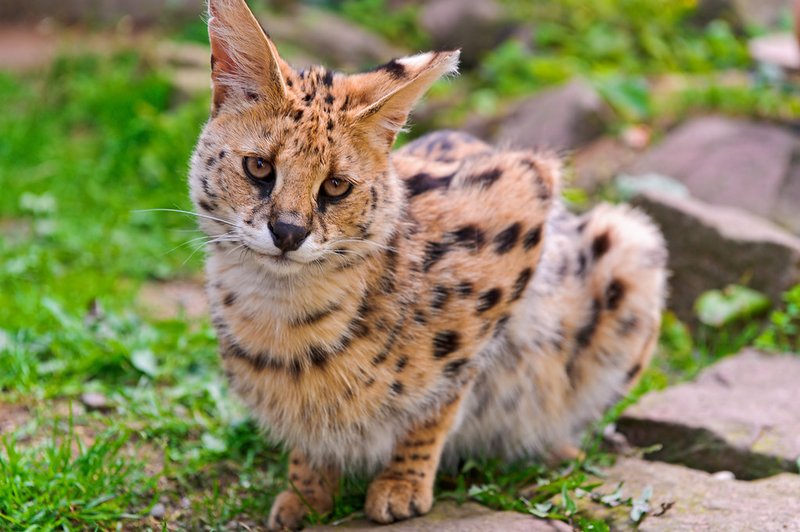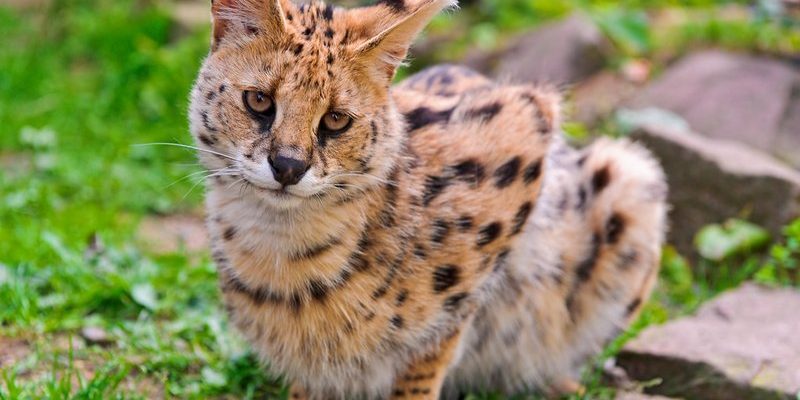
Imagine living in a place where food and water can be scarce, temperatures can swing from scorching heat to chilly nights, and predators lurk around every corner. While you might find it tough to get comfy in such conditions, servals thrive. They’ve got a set of unique skills and adaptations that help them not just survive, but truly flourish in places like savannas and wetlands. So, let’s dive into the fascinating ways these remarkable creatures manage life in demanding environments.
Adaptations to Climate
Servals are built for the extremes. In the sweltering African heat, they rely on their sleek bodies and long legs to traverse their environment efficiently. Their thin fur helps to keep them cool, allowing for air circulation that prevents overheating. Quite clever, right? But here’s the thing: survival isn’t just about dealing with the heat. At night, when temperatures drop, servals can curl up to conserve warmth.
One of the most interesting things about servals is their hunting habits, which adapt to the climate they live in. They’re primarily nocturnal, meaning they do their best hunting at night. This not only helps them avoid the heat of the day but also allows them to catch small mammals and birds that are more active during these cooler hours. Think about it—a playful cat hunting in the moonlight; it’s almost like a scene from a wildlife movie!
Water Sources and Hydration
Now, let’s chat about water. In some areas of Africa, waterholes can be few and far between. Servals are masters at finding hydration in unusual places. They often lick moisture from plants, especially early in the morning when dew collects on the leaves. That’s not something you’d think about a cat doing, right?
When they can’t find water directly, servals will also consume their prey, which provides hydration. Eating small mammals, like rodents, gives them some of the moisture they need to survive. It’s like having a built-in water source right on the menu! This adaptability means that even in tough conditions, they can keep going without needing to drink tons of water every day.
Hunting Strategies
Let’s dig into how servals hunt. These cats are known for their impressive jumping ability—much like a little furry basketball player. When hunting, they can leap up to six feet in the air to catch birds or other small prey. This agility is crucial, especially in the dense grass of the savanna, where they need to surprise their meals.
They have a unique hunting technique too. Servals often stalk their prey, moving silently through the tall grass. Once they’re close enough, they’ll pounce, using their powerful hind legs to launch themselves forward. It’s a strategic approach that requires patience and skill, showcasing their ability to adapt and thrive in challenging environments. Honestly, watching a serval hunt is like seeing nature’s design at its finest; every move is calculated for success.
Social Behavior and Territory
Servals tend to be solitary animals, which might seem surprising considering how social many other cats are. Their social behavior is all about survival. By keeping to themselves, they reduce competition for food and territory. It’s like having your own space in a big city: less noise and more personal resources.
That said, they do communicate with one another through vocalizations like purring, hissing, and even a sort of growling when they feel threatened. Each serval has its own territory, which they defend against others. This territoriality is key, as having a dedicated space means better access to food and resources, making it easier to survive day to day.
Understanding Predators and Threats
While servals are impressive hunters, they aren’t at the top of the food chain. They face threats from larger predators like lions and hyenas, which can pose a risk during their hunts. This is another reason why their stealth and agility are essential. Being able to move quietly and quickly means they can avoid confrontation and get away to safety when needed.
Servals also have to be cautious about humans—habitat destruction and hunting have made their survival more challenging. Nonetheless, these cats have an incredible knack for adapting. They often adjust their hunting times or relocate to less disturbed areas to stay safe.
Conservation Efforts
Speaking of threats, let’s talk about what’s being done to help servals thrive. Conservation efforts are increasingly important as their habitat shrinks. Many wildlife organizations are working to protect their environments and educate local communities about the importance of these unique creatures. It’s like teaming up to create a safety net for them—preserving their homes so they can continue to flourish.
In addition to habitat protection, there are programs aimed at reducing human-wildlife conflict. By teaching communities how to coexist with servals, these efforts can lead to a more harmonious relationship. It’s about finding balance—so both humans and wildlife can thrive together.
The Importance of Servals in Their Ecosystem
Finally, let’s consider why servals matter. They play a vital role in their ecosystems by controlling rodent populations. By keeping these numbers in check, servals help maintain the health of their environment. Imagine if a city had no trash collectors; things would quickly get messy, right? Servals help keep their habitat clean and balanced.
Their presence indicates a healthy ecosystem, which is important for biodiversity. So, taking care of servals means taking care of the larger web of life. That’s something we can all get behind—protecting nature helps us all in the long run.
In conclusion, servals are remarkable creatures that have evolved to survive in some of the harshest environments on the planet. Their adaptations, unique hunting strategies, and social behaviors showcase their resilience and ingenuity. As we continue to learn about and protect these incredible cats, we also gain insights into the complex and beautiful world they inhabit. So next time you see a cat, remember there are wild cousins out there, thriving against all odds.

